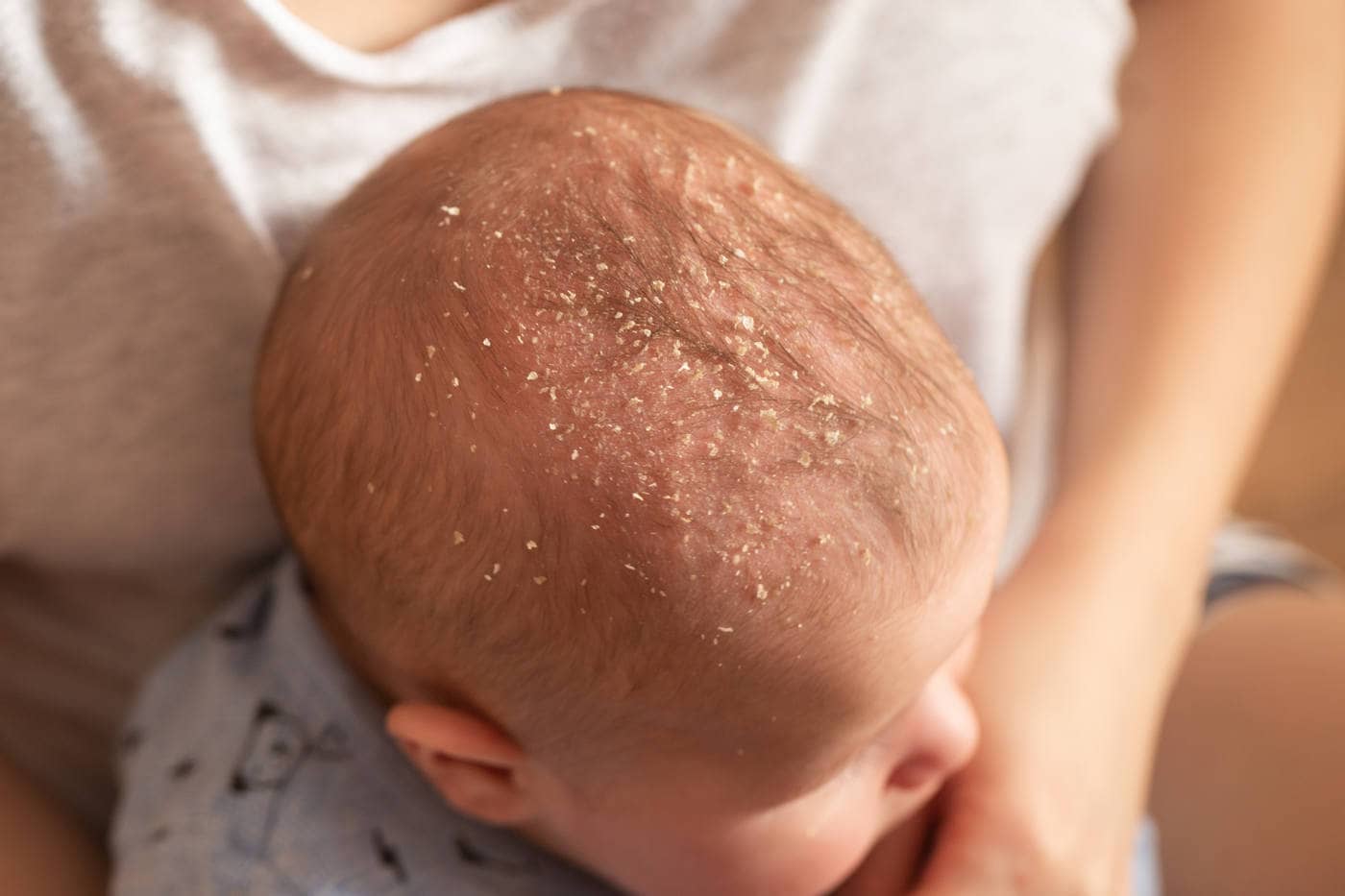Cradle Cap Causes, Symptoms and Treatments

Cradle cap can appear as patchy scaling or thick crusts on the baby's scalp with greasy skin covered with flaky yellow or white scales. While cradle cap causes oily or crusty scaly patches on the scalp, it's not painful or itchy as it appears to be and doesn't trouble the infant. Learn more about what cradle cap is, its symptoms, causes and how to treat cradle cap.
What is Cradle Cap?
Cradle cap is the common term used to refer to seborrheic dermatitis of the scalp in infant babies. It is also known as seborrhea and can appear on the baby's forehead, face, behind the ears, the diaper area, armpits and in other parts of the baby's body where there are creases or skin folds. Infants can develop this condition in the first year of their life (starting from 2 weeks to 12 months old). Despite how it looks irritating to the skin, cradle cap is a harmless condition; it is usually not itchy and doesn't cause pain to the baby.¹
Cradle Cap Symptoms:
Symptoms of cradle cap can be easy to recognize since they are all external. Even though it usually appears on the scalp, seborrheic dermatitis can spread to the face, diaper area or other parts like armpits and neck.¹ Here are the main signs of cradle cap in babies and how it can look like:²
Slightly red scaly patches.
Crusty yellow patches.
Redness and moistness in skin folds or creases.
Scaly or flaky skin.
Greasy patches or crusts.
Cradle Cap Causes:
Researchers couldn't pinpoint the exact cause of seborrheic dermatitis or cradle cap, but they know it is not contagious. Cradle cap is a harmless condition and is not caused by an infection or allergy. It is also not caused by poor hygiene, as most people assume. All babies between the ages of 2 weeks to one-year-old are at risk of developing cradle cap.³
How is Cradle Cap Diagnosed?
Seborrheic dermatitis symptoms can be easy to spot. They can be found in areas where the sebaceous gland produces more oil, like the scalp, behind ears and the T line of the face. Parents need to learn how to manage this chronic non-inflammatory scaling skin condition and get the necessary evaluation and treatment. Your doctor will be able to evaluate the baby's condition without requiring biopsy or laboratory studies.⁴
How to Treat Cradle Cap?
Cradle cap is typically a self-limiting skin condition that has no adverse side effects related to feeding or sleep interruption in babies. It is also hard to prevent it altogether since no direct proven causes are known for the condition. However, parents can deal with a mild cradle cap on the scalp through:⁴
Washing the scalp daily with gentle baby shampoo.
Using an emollient, like baby oil or fragrance-free baby jelly, designed for baby skin before shampooing.
Leaving a baby moisturizer on the scalp overnight to break up the scale.
Massaging the scalp at night with mineral baby oil.
Gentle removal with a soft toothbrush after the scale is softened by the baby oil and easier to remove.
Daily shampooing the affected areas after removal with gentle baby shampoo to prevent cradle cap from reappearing.
If cradle cap does not improve with any of these measures and becomes more extensive, it may need to be treated with an antifungal cream; such as ketoconazole 2% or a topical steroid cream like hydrocortisone 1%.
When to see a doctor about cradle cap?
If the cradle cap condition is severe and does not improve, it may have gotten infected. If so, the skin will become redder, and blisters may appear. In this case, get your baby checked by a doctor since he may need antibiotics for the possible infection. Also, seek medical advice if the cradle cap spreads to other areas of the face or body. The doctor may prescribe medicinal cream or shampoo, or antifungal treatment.⁵